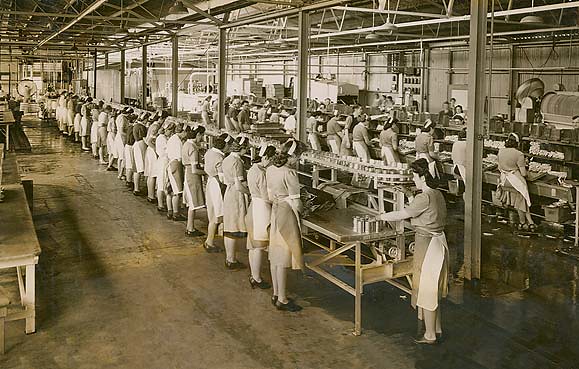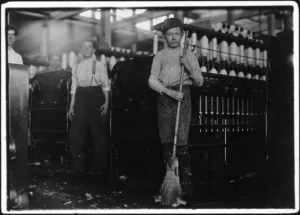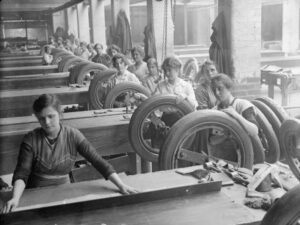The industrial revolution made life different. It dramatically affected the dominant social, cultural, and economic setup. There was the emergence of new social classes. Gradually, the world came to terms with the profusely defined role of women and the industrial revolution, paving the way to the modern-day work culture.
The focus of work shifted from home to the factories. Also, children as small as 6 were subjected to working with their mothers or sisters rather than attending school. However, so much hard work and long work periods did not assure huge pay or the ultimate luxury. The working atmosphere was quite unclean, and the management stood strict, widening the gap between the poor and the rich.
How Did Women’s Roles Change During The Industrial Revolution?
The actual span of the industrial revolution is widely debatable, but scholars agree it to be somewhere between 1760 – 1840. New opportunities, changes in work ideas, and the pre-existing economic cycles drastically altered. For women and the industrial revolution, they were now the wage earners contributing to the family wealth.
Women And The Industrial Revolution – A Shift In The Traditional Roles
Throughout the 18th and 19th centuries, there was a rise in textile mills across Great Britain. As a result, women started entering the workforce to be able to support their families.
In 1813 a wealthy merchant from Britain, Francis Cabot Lowell, with his mechanic Paul Moody was able to come up with a working power loom. These looms created machine-made goods, allowing consumers access to easy products.

Lowell went on to build a textile mill by the River Charles in Waltham, Massachusetts, with help from a group of investors. By 1817 it was a great success. The investors hired corporate recruiters to build a steady workforce, finding young women from rural England interested in working in the mills. But why women?
- Women could be easily controlled and were less expensive than men
- Also, women would only live in the city for a few years and then leave to become mothers or wives. This prevented the making of a permanent working class and fewer hassles.
Women’s Lives During The Industrial Revolution
With time there was more competition, and the working environment deteriorated. Women from the working class were paid less and had little say in the factory environment. Women’s jobs during the industrial revolution were quite frustrating. They had to work 12-14 hours daily. Slowly women started to testify about the hardships in front of the British parliament.
Not Getting Access To Equal Pay
Gender discrimination greatly segregated men and women in the workplace during the Industrial Revolution. The women folk received half the price as their men colleagues. For example, industrial workers, in general, were paid 10 shillings a week, which was half for women. Industrial Revolution paved the way for three different classes – the working class, the middle class or bourgeoisie, and the elite. Women from the working class completed long hours in the factories/coal mines and worked as house helps to the nobility.
Poor Working Conditions
There are recorded testimonials of female workers that a typical workday would last from 6 am to 7 pm, with a lunch break of 40 minutes. The working conditions were bad, and the food was dust-covered, causing poor appetite. Managers strapped the workers for being late or if they broke the rule. At times the workers were even misbehaved with and slacked from their jobs.

Getting Preferred More In Comparison To Men
Indeed, there was a rise in demand for women workers. Rather than men, the factory owners and elite class wanted to hire women laborers for menial tasks. The very reason was these people found it easy to rule over the women folk compared to the men. As a result, mother and child went to work together in some places because there were too many mouths to feed in the family.
Women Getting Lung Diseases
As days passed and new industrial cities came into existence, there was a fall in textile prices. However, the mill owners slashed the labor price to keep their profit high. Workers were made to look after more machines, and the speed of the motors rolling was increased. It was chaos in the workspace. Women in the textile industry started getting affected by lung diseases, and those in the coal mines were working under no protected laws. There are instances of pregnant women giving birth to newborns in the mines.
The Pathway To Feminism And Labor Movements
The era of Women and the industrial revolution marked poor working conditions, unequal pay, and highly misbehaving management. So the female working class started uniting for their rights. Such an organization was the Lowell Female Labor Reform Association. Thousands of female workers signed petitions asking the state to limit their work shifts to 10 hours.

However, at that time, lack of political recognition, voting rights, and labor laws letting women inherit their properties were obstacles to successful protests.
- Women were made to believe that the home was where they belonged and that working in factories was not permanent.
- For those who still wanted to protest, the lack of a consistent workforce weakened their agenda.
- Many women came to work because it was their temporary solution to save some money for marriage and life after.
The industrial revolution made women realize their capabilities, to be precise. Made women what we see today.



